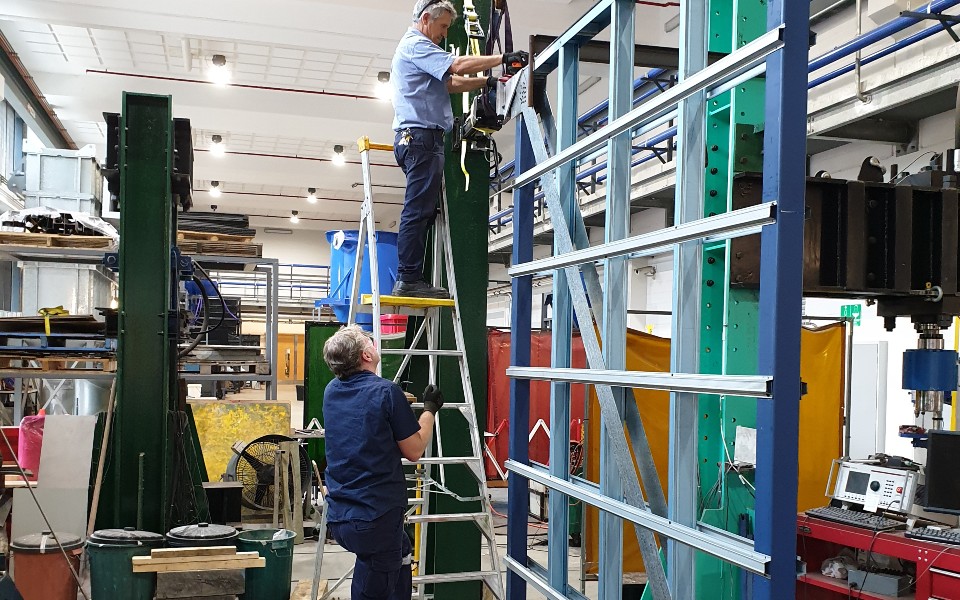December 9, 2021
3D Development, Analysis and Design of Cold-Formed Steel Mid-rise Apartment Building Frames Project
Another exciting project is underway within the Steel Research Hub which brings together expertise from the University of Wollongong (UOW) and BlueScope (BSL) and focuses on the development, analysis and design of cold-formed steel (CFS) products for mid-rise apartment building frames.
From Project B2.1 of the first ARC Steel Research Hub, it was evident from a conceptual design perspective that the lateral load demand for the lower storeys of an archetype CFS intensive mid-rise apartment building in Australia is beyond the capacity of existing CFS shear panels.
In this new expanded project, novel, high-capacity shear panels will be designed for several load levels using highly efficient steel products already used in the construction of CFS mid-rise apartment buildings.
Floor-to-wall connections for the mid-rise shear panels will be developed and investigated through pilot-scale laboratory tests and Finite Element Analyses as commercially available connection details in Australia are primarily designed for one or two storey houses only. Analytical models will be developed for the mid-rise floor-to-wall connections to enable their simulation in a comprehensive 3D structural analysis of a mid-rise CFS building frame, for research as well as for practical design purposes.
Efficient and effective shear panels for use in short-length walls often found in townhouses will also be developed. Townhouses, with relatively few walls at the ground level, often require the use of expensive and site-work reliant lateral load resisting systems.
The Project Team consists of UOW’s Project Leader Professor Lip Teh and Doctor Aziz Ahmed (formerly a Hub Research Fellow, now UOW Lecturer), and Associate Researchers from Industry Trevor Clayton and Paul Jones. A new post-doctoral fellow, together with two PhD students will be appointed in 2022.
From industry and academic perspectives, the potential impact of this research should be:
- Enabling the construction of CFS intensive mid-rise apartment buildings where the lateral load resisting system is composed of lightweight, high-capacity CFS shear panels, leading to lower costs.
- Facilitating fast construction as the CFS shear panels can be prefabricated off-site and installed at the same time as the gravity load bearing system.
- Providing flexibility to the layout of apartment buildings as the walls can act as independent or auxiliary shear walls.
- Doing away with the need for expensive alternative systems to resist lateral loads of CFS townhouses.
- Making available analysis/design guidelines that account for the stiffness contributions of all relevant components, leading to more efficient yet reliable structural designs of CFS multi-storey buildings.
The Steel Research Hub and University of Wollongong are delighted to continue the long-standing collaborative relationship with BlueScope. In this way, we look forward to seeing the many achievements that unfold in this project.
